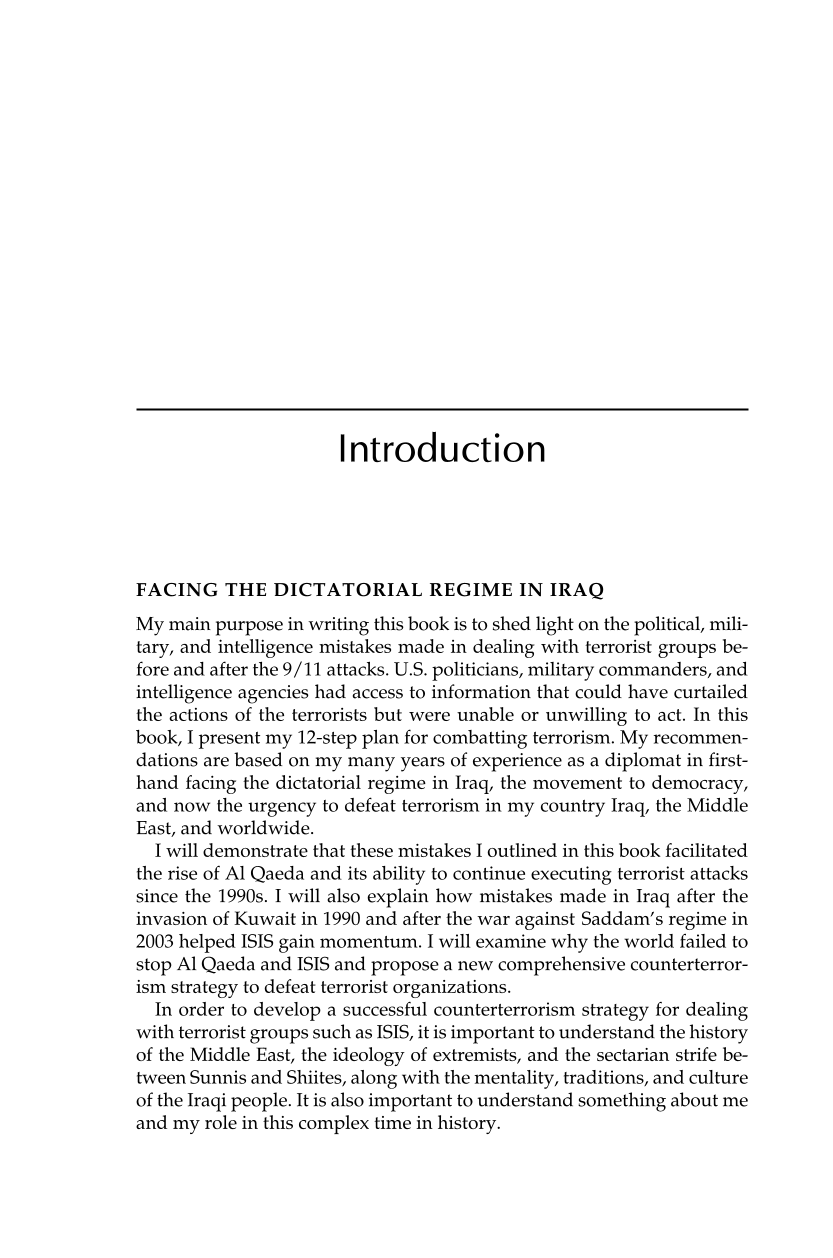Introduction
FACING THE DICTATORIAL REGIME IN IRAQ
My main purpose in writing this book is to shed light on the political, mili-
tary, and intelligence mistakes made in dealing with terrorist groups be-
fore and after the 9/11 attacks. U.S. politicians, military commanders, and
intelligence agencies had access to information that could have curtailed
the actions of the terrorists but were unable or unwilling to act. In this
book, I present my 12-step plan for combatting terrorism. My recommen-
dations are based on my many years of experience as a diplomat in first-
hand facing the dictatorial regime in Iraq, the movement to democracy,
and now the urgency to defeat terrorism in my country Iraq, the Middle
East, and worldwide.
I will demonstrate that these mistakes I outlined in this book facilitated
the rise of Al Qaeda and its ability to continue executing terrorist attacks
since the 1990s. I will also explain how mistakes made in Iraq after the
invasion of Kuwait in 1990 and after the war against Saddam’s regime in
2003 helped ISIS gain momentum. I will examine why the world failed to
stop Al Qaeda and ISIS and propose a new comprehensive counterterror-
ism strategy to defeat terrorist organizations.
In order to develop a successful counterterrorism strategy for dealing
with terrorist groups such as ISIS, it is important to understand the history
of the Middle East, the ideology of extremists, and the sectarian strife be-
tween Sunnis and Shiites, along with the mentality, traditions, and culture
of the Iraqi people. It is also important to understand something about me
and my role in this complex time in history.








































































































































































































































































































